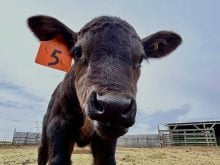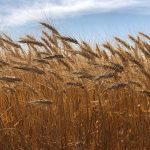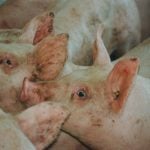Mineral (and vitamin) feeding programs for overwintering beef cows have remained pretty much the same, year after year on the Prairies.
However, standard recommendations are likely to change this winter. Better mineral (and vitamin) choices should be fed this year in the wake of last summer’s severe drought. Dry conditions compromised good mineral/vitamin status of brood cows, lowered forage quality and literally changed the nature of overwintering diets.
There are some new winter beef cow mineral-feeding programs coming out at the right time to meet these challenges head-on by providing the mineral and vitamin requirements of the gestating cow herd right through until calving season.
Read Also

Harvest wraps up and fall work begins
At the Eppich famly ranch in western Saskatchewan, the fall harvest was successful with few breakdowns, cows and calves have been sorted and a new tractor has arrived
The accompanying table (below) illustrates a guaranteed analysis from a new overwintering cow mineral that I recently designed. It is currently being fed to a 300 head cow-calf operation which was severely impacted by the dried-out pastures and high-saline dugout water during this past grazing season.
 In developing their 22:7 beef cow premix, I matched it closely to the cows’ diet made up of mainly low-quality forages, which was heavily supplemented with corn dried distillers’ grains (DDGS). Specifically, their overwinter diet consists on a per-cow basis: 10 lbs. grass hay, 10 lbs. barley straw, seven lbs. of DDGS and 0.2 lbs. of a 22:7 beef cow premix, for a total of 29.2 lbs.
In developing their 22:7 beef cow premix, I matched it closely to the cows’ diet made up of mainly low-quality forages, which was heavily supplemented with corn dried distillers’ grains (DDGS). Specifically, their overwinter diet consists on a per-cow basis: 10 lbs. grass hay, 10 lbs. barley straw, seven lbs. of DDGS and 0.2 lbs. of a 22:7 beef cow premix, for a total of 29.2 lbs.
By ignoring the macromineral portion of this premix for the moment, I actually focused on building the trace mineral status in these beef cows that would fit into a well-balanced mineral (premix) package to be fed at 50-100 grams daily.
For example, I knew I could help build up the cow herd’s copper status by simply formulating the premix with 3,000 ppm copper into it by using copper sulphate or more bio-available chelated copper.
I also did similar supplementations to supply adequate levels of zinc, manganese, iodine, cobalt and selenium as well as adding elevated levels of vitamins A, D and E.
Yet, it’s not as easy as when I wanted to help satisfy their macro-mineral requirements. That’s because I had to account for the present macromineral content in overwintering forages. Their forages supplied a significant portion of these required nutrients, which really limited me to a complementary role of my overwinter cow mineral. In other words, this means by feeding these forages and mineral together we should be able to supply to the cows’ 25 grams of calcium and 18 grams of phosphorus requirements per day.
Drought makes it challenging
Despite this exercise of matching forage and minerals, life of a beef nutritionist is a little easier in years of adequate rainfall. That’s because legumes such as alfalfa hay contain high levels of calcium and nominal amounts of phosphorus, while cereal silage, grass hay or greenfeed tend to be inadequate in calcium and high in phosphorus.
Under more normal conditions, any beef minerals that I recommend would balance legume forages with a modest level of calcium and slightly elevated phosphorus levels, while another beef mineral would match the second case of grass and cereal forages, because it would contain considerable levels of calcium and modest levels of phosphorus.
Unfortunately, this rule of thumb doesn’t always work with drought forages. Their macro-mineral profiles tend to be highly variable and frequently differ from forage crops grown even on the same fields during “normal” years. For example, I discovered in analyzed samples of drought hayfields regardless of whether they were legumes or grasses are often phosphorus deficient (< 0.20 per cent), while they may contain adequate levels of calcium. As a result, it makes sense that the best beef mineral to fit these cases might address a possible dietary phosphorus deficiency.
What throws a monkey wrench even into this good advice is that I must also take into account the mineral profiles of other feeds added to the cow herd diets. That’s because in a drought year, new feedstuffs are often fed that can change the mineral profile of the entire diet. For instance, dried distillers’ grains are fed to many drought-stressed cow herds to supplement essential energy and protein, but they also contain a high level of available phosphorus (1.2 per cent). This could make it unnecessary to elevate dietary phosphorus in a recommended cow mineral as just mentioned above.
In the end, these are just nutritional detours that must be taken to develop a new winter beef mineral for drought-stressed beef cows. Its success will be finally measured by meeting their gestation requirements for essential minerals and vitamins that will help bring them through a successful calving season.
















